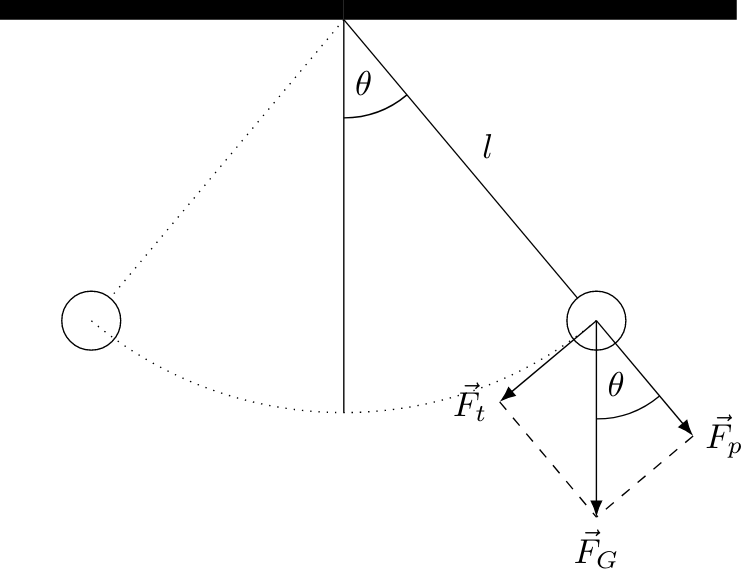Simple Pendulum
The gravitational force can be decomposed into two components: one force $\vec{F}_t$ tangential to the motion and one force $\vec{F}_p$ perpendicular to it. The force, that causes the pendulum to oscillate, is, therefore, equal to $\vec{F}_t$ which is connected with the $\vec{F}_G$ via $$F_t = F_G\sin\theta$$ The equation of motion is similar to the spring pendulum given as $$m\ddot{x} = F_G\sin\theta$$ Because the pendulum can only move on a circular track, polar coordinates can be used which leads to the replacement $$\ddot{x} = l\ddot{\theta}$$ Together with the $F_G = mg$, it follows for the equation of motion $$\ddot{\theta} = \frac{g}{l}\sin\theta$$ At the moment we concentrate only on small amplitudes for which $\sin\theta$ can be approximated with $\theta$ which leads to $$\ddot{\theta} = \frac{g}{l}\theta$$ The same ansatz $$\theta(t) = A\sin\omega t$$ can be made, where $\omega$ is now given as the fraction $g$ over $l$. The period of a simple pendulum can then be calculated according to $$T = 2\pi\sqrt{\frac{l}{g}}$$ In this equation, $l$ represents the length of the pendulum and $g$ the gravitational acceleration. The important and maybe not obvious result is that the period of time is independent of the amplitude and the mass that has been attached to the thread. Simple Pendulum
For small amplitudes, the period $T$ of a simple pendulum does only depend on the rope length $l$ and the g-factor: $$T = 2\pi\sqrt{\frac{l}{g}}$$
Example
Let us consider a simple pendulum having a rope length of $l=1\,\mathrm{m}$. If we approximate the g-factor with $10\,\mathrm{m/s^2}$, then the square root of 0.1 multiplied by $\pi$ is almost exactly 1 second. Now we only have to multiply this result with 2 which leads to a period of 2 seconds.
This page contains 358 words and 2101 characters.
Last modified: 2022-10-01 17:10:22 by mustafa



